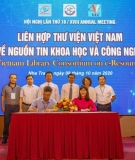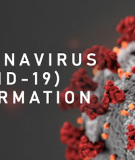Tài liệu Thư viện số
- Quy chuẩn kỹ thuật Quốc gia (305 )
- Kiến trúc (204 )
- Hàng hải - Máy tàu biển (336 )
- Cơ khí - Đóng tàu (1167 )
- Điện - Điện tử (1158 )
- Công trình (1059 )
-
Công nghệ thông tin
(1128 )
- Kinh tế (821 )
- Ngoại ngữ (254 )
- GDQP - Lý luận chính trị (196 )
- Cơ sở - Cơ bản (415 )
- Luận văn - Luận án (844 )
- Đề tài khoa học (43 )
- Tài liệu hội thảo (8 )
- Văn bản - Biểu mẫu (14 )
- Tài liệu khác (267 )
Danh mục TaiLieu.VN
- Mẫu Slide Powerpoint
- Luận Văn - Báo Cáo (344720)
- Kinh Doanh Marketing (65512)
- Kinh Tế - Quản Lý (48934)
- Tài Chính - Ngân Hàng (55898)
- Công Nghệ Thông Tin (142209)
- Tiếng Anh - Ngoại Ngữ (47066)
- Kỹ Thuật - Công Nghệ (134345)
- Khoa Học Tự Nhiên (107174)
- Khoa Học Xã Hội (82451)
- Văn Hoá - Nghệ Thuật (54408)
- Y Tế - Sức Khoẻ (173915)
- Nông - Lâm - Ngư (62504)
- Kỹ Năng Mềm (29016)
- Biểu Mẫu - Văn Bản (27610)
- Giải Trí - Thư Giãn (51994)
- Văn Bản Luật (198854)
- Tài Liệu Phổ Thông (402015)
- Trắc Nghiệm Online (213578)
- Trắc Nghiệm MBTI
- Trắc Nghiệm Holland
Tin tức nổi bật
Kết quả 973-984 trong khoảng 1128
-
Lecture TCP-IP protocol suite - Chapter 10: Internet Group Management Protocol (IGMP)
Upon completion you will be able to: Know the purpose of IGMP, know the types of IGMP messages, understand how a member joins a group and leaves a group, understand membership monitoring, understand how an IGMP message is encapsulated, understand the interactions of the modules of an IGMP package.
28 p vimaru 29/04/2016 1252 12
-
Lecture TCP-IP protocol suite - Chapter 12: Transmission Control Protocol (TCP)
Upon completion you will be able to: Be able to name and understand the services offered by TCP, understand TCP’s flow and error control and congestion control, be familiar with the fields in a TCP segment, understand the phases in a connection-oriented connection, understand the TCP transition state diagram, be able to name and understand the timers used in TCP, be familiar with the TCP options.
64 p vimaru 29/04/2016 1568 12
-
Lecture TCP-IP protocol suite - Chapter 18: Domain Name System (DNS)
After studying this chapter you will be able to: Understand how the DNS is organized, know the domains in the DNS, know how a name or address is resolved, be familiar with the query and response formats, understand the need for DDNS.
41 p vimaru 29/04/2016 430 16
-
Lecture TCP-IP protocol suite - Chapter 17: BOOTP and DHCP
In this chapter we discuss our first client/server application program, Dynamic Host Configuration Protocol (DHCP). This application is discussed first because it is the first client/server application program that is used after a host is booted. In other words, it serves as a bootstrap when a host is booted and supposed to be connected to the Internet, but the host does not know its IP address.
11 p vimaru 29/04/2016 1407 9
-
Lecture TCP-IP protocol suite - Chapter 15: Application layer and client-server model
This chapter is an introduction to the application layer. In the next eight chapters we introduce common client-server applications used in the Internet. In this chapter, we give a general picture of how a client-server program is designed and give some simple codes of their implementation. The area of network programming is a very vast and complicated one; it cannot be covered in one chapter. We need to give a bird’s-eye view of this...
20 p vimaru 29/04/2016 1671 4
-
Lecture TCP-IP protocol suite - Chapter 20: File Transfer Protocol (FTP)
Upon completion you will be able to: Understand the connections needed for FTP file transfer be familiar with FTP commands and responses know the differences between FTP and TFTP be familiar with TFTP message types understand TFTP flow and error control.
26 p vimaru 29/04/2016 1223 9
-
Lecture TCP-IP protocol suite - Chapter 23: Simple Network Management Protocol (SNMP)
The chapter has several objectives: To discuss SNMP as a framework for managing devices in an internet using the TCP/IP protocol suite; to define a manager as a host that runs SNMP client and any agents as a router or host that runs a server program; discuss SMI and MIB, which are used by SNMP; to show how SMI names objects, defines the type of data, and encodes data;...
38 p vimaru 29/04/2016 1397 7
-
Lecture TCP-IP protocol suite - Chapter 19: TELNET and Rlogin
In this chapter you will learn: Concept, network virtual terminal (NVT), NVT character set, embedding, options, option negotiation, suboption negotiation, controlling the server, out-of-band signaling.
41 p vimaru 29/04/2016 1253 2
-
Lecture TCP-IP protocol suite - Chapter 27: Mobile IP
Mobile communication has received a lot of attention in the last decade. The interest in mobile communication on the Internet means that the IP protocol, originally designed for stationary devices, must be enhanced to allow the use of mobile computers, computers that move from one network to another.
26 p vimaru 29/04/2016 1560 8
-
Lecture TCP-IP protocol suite - Chapter 25: World Wide Web (WWW)
The chapter has several objectives: To discuss the architecture of WWW and describe the concepts of hypertext and hypermedia; to describe Web clients and Web servers and their components; to define URL as a tool to identify a Web server; to introduce three different Web documents: static document, dynamic document, and active document;...
24 p vimaru 29/04/2016 668 5
-
Lecture TCP-IP protocol suite - Chapter 21: Trivial File Transfer Protocol (TFTP)
Transferring files from one computer to another is one of the most common tasks expected from a networking or internetworking environment. As a matter of fact, the greatest volume of data exchange in the Internet today is due to file transfer. In this chapter, we discuss two protocols involved in transferring files: File Transfer Protocol (FTP) and Trivial File Transfer Protocol (TFTP).
23 p vimaru 29/04/2016 1582 19
-
Lecture TCP-IP protocol suite - Chapter 22: Simple Mail Transfer Protocol (SMTP)
The main contents of this chapter include all of the following: User agent (UA), addresses, delayed delivery, aliases, mail transfer agent (MTA), commands and responses, mail transfer phases, mime, mail delivery, mail access protocols.
35 p vimaru 29/04/2016 1196 16
Đăng nhập
Bộ sưu tập nổi bật
























